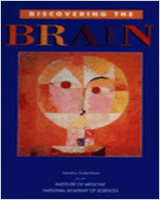NCBI Bookshelf. A service of the National Library of Medicine, National Institutes of Health.
Ackerman S. Discovering the Brain. Washington (DC): National Academies Press (US); 1992.
The brain is the last and grandest biological frontier, the most complex thing we have yet discovered in our universe. It contains hundreds of billions of cells interlinked through trillions of connections. The brain boggles the mind.
The diseases that disrupt brain function are among the most painful and destructive we know—Alzheimer's disease, schizophrenia, Huntington's disease, and others. They invade the mind, tearing at the fabric of family life and shattering the attributes that make us most human. These diseases are the enemy; neuroscientists are fighters on the front lines. Their weapons are new ideas, tested by experimentation. The revolution in modern biology has supplied science with a formidable armamentarium, well stocked with purchases made using federal dollars.
The health of neuroscience today rests firmly on this foundation of public investment. Since World War II, our nation has consistently supported biomedical research, creating the most robust research enterprise the world has ever seen. That success, evidenced by the prizes and international recognition accorded American scientists, has depended on champions within government.
Silvio Conte was one such champion, a true friend of science. He passionately believed biomedical research could stop the ravages of incurable disease. Year after year, he supported such research in Congress. One of his last legislative acts was to shepherd a congressional resolution declaring the 1990s the "Decade of the Brain" through the congressional process, resulting in the official proclamation by President Bush in July 1989.
This book arose out of a July 1990 symposium organized by the Institute of Medicine to initiate the Decade of the Brain, the first installment in what will certainly develop into many decades of fruitful research. Rep. Conte attended the IOM symposium near the end of his public career. He died in office later that year. He will be sorely missed, especially by those who commit their lives to science. This book is dedicated to him.
The symposium was a political event with a scientific purpose. Scientists reviewed the state of their knowledge in the presence of policymakers, covering topics that ranged from the molecular events underlying transmission of nerve impulses to the biology of perception and consciousness. Sandra Ackerman is to be congratulated on her clear distillation of themes from the symposium into this book, which introduces neuroscience to those who may be approaching it for the first time. It serves as a clear overview of neuroscience in the early 1990s, as the molecular tools developed over the past three decades are becoming sufficiently powerful to allow us to navigate through an intellectual terrain as vast as the human brain.
James D. Watson
Director, Cold Spring Harbor Laboratory, and Director, National Center for Human Genome Research
National Institutes of Health
- Foreword - Discovering the BrainForeword - Discovering the Brain
Your browsing activity is empty.
Activity recording is turned off.
See more...
